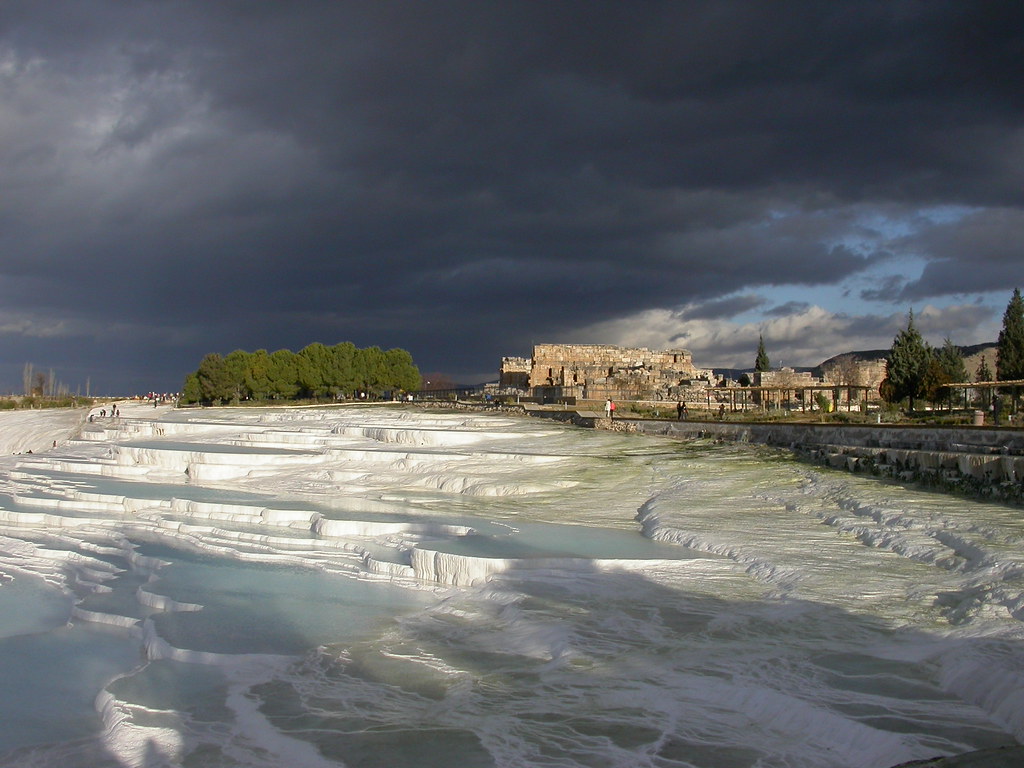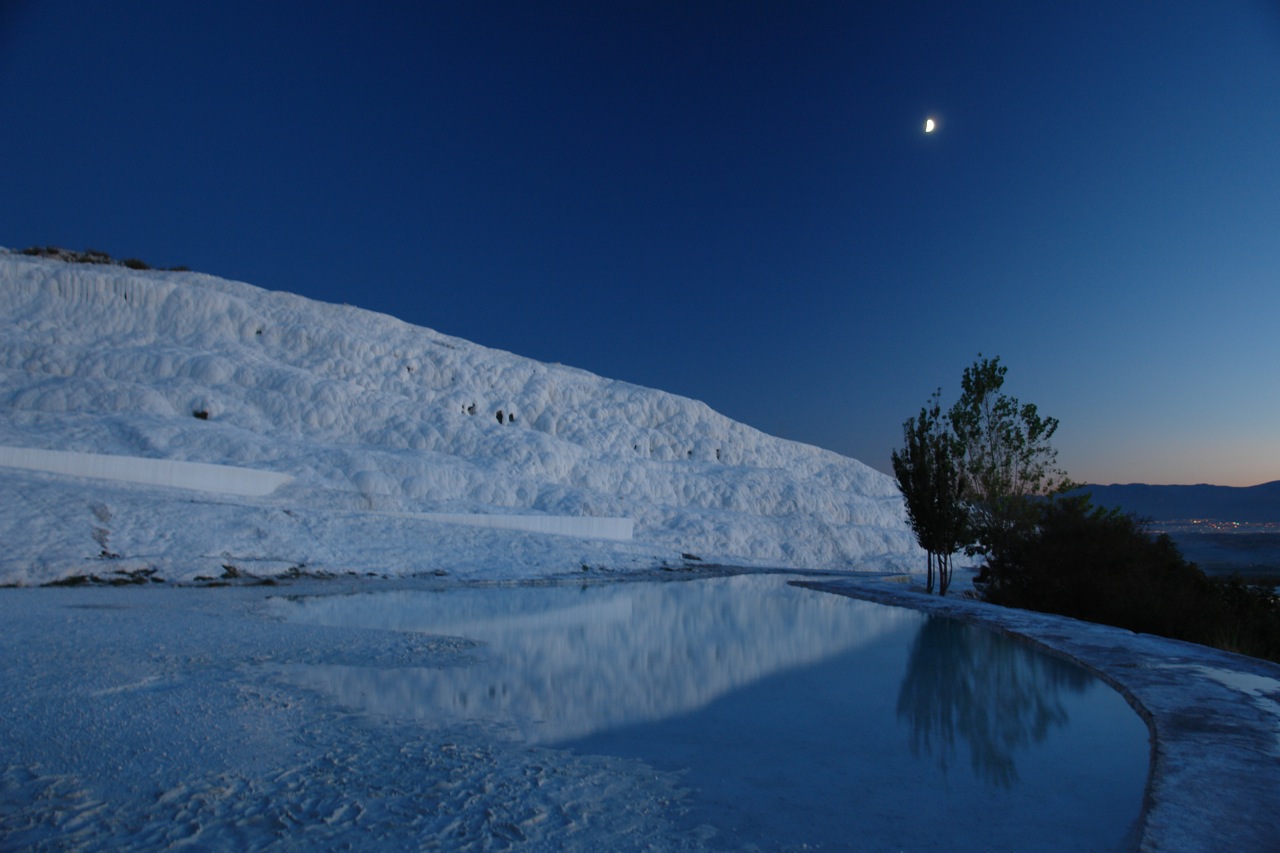 Pamukkale, meaning "cotton castle" in Turkish, is a natural site and attraction in south-western Turkey in the Denizli Province. Pamukkale is located in Turkey's Inner Aegean region, in the River Menderes valley, which enjoys a temperate climate over the greater part of the year.
Pamukkale, meaning "cotton castle" in Turkish, is a natural site and attraction in south-western Turkey in the Denizli Province. Pamukkale is located in Turkey's Inner Aegean region, in the River Menderes valley, which enjoys a temperate climate over the greater part of the year.
The ancient city of Hierapolis was built on top of the white "castle" which is in total about 2700 meters long and 160m high. It can be seen from a great distance, eg. when driving down the hills on the opposite side of the valley to the town of Denizli, which is 20 km away.
The tectonic movements that took place in the fault depression of the Menderes river basin did not only cause frequent earthquakes, but also gave rise to the emergence of a number of very hot springs. It is the water from one of these springs, with its large mineral content — chalk in particular — that created Pamukkale.
Apart from some radioactive material, the water contains large amounts of hydrogen carbonate and calcium, which leads to the precipitation of calcium bi-carbonate. Every second 250 l hot water rises from this spring, precipitating for every liter of water 2.20 g chalk or for every second 0.55 kg of chalk. In the course of time some sources dried up because of earthquakes, while new ones arose in the neighbourhood.
The effect of this natural phenomenon leaves thick white layers of limestone and travertine cascading down the mountain slope resembling a frozen waterfall. One form of these formations consists of crescent-shaped travertine terraces with a shallow layer of water, lying in a step-like arrangement down the upper one-third of the slope, with the steps ranging from 1m to 6 m in height. The other form consists of stalactites, propping up and connecting these terraces.
The oldest of these rocks are crystalline marbles, quartzites and schists. The oldest date back to the Pliocene period, while the top layer is Quaternary in age. Fresh deposits of calcium carbonate give the site a dazzling white look.
These sources were well-known in the Antiquity. They were described by the Roman architect Vitruvius. The Phrygian Greeks built Hierapolis on top of the hill. They ascribed medical properties to the spring water, bestowed by the gods, especially Asklepios (demigod of medicine) and his daughter Hygieia (goddess of health, cleanliness and sanitation), under the protection of Apollo (god of medicine and healing).
credited to wikipedia and flickr users: echo_29, gibna kebira, sandraLE, maluni, el senyors dels bertins, ruslik, marettay, asug, robert louden, klaus1953













6 comments:
Wow these are beautiful photos. Anna :)
well, thanks Anna !
Yes they are beautiful photos and one of them is MINE! What is it doing on your site, without permission or credit?
Here is the link:
http://www.flickr.com/photos/robertlouden/273132669/in/set-72157602242776662/
Robert how you mean without credit?? At the end of the post i write credit to all photographers:
credited to wikipedia and flickr users: echo_29, gibna kebira, sandraLE, maluni, el senyors dels bertins, ruslik, marettay, asug, robert louden, klaus1953
It's incredible!!!!!
This is the nature's present to us
russell westbrook shoes
kobe shoes
cheap jordans
kyrie irving shoes
nike sneakers for men
curry 6 shoes
louboutin shoes
yeezys
balenciaga triple s
nike air max
Post a Comment